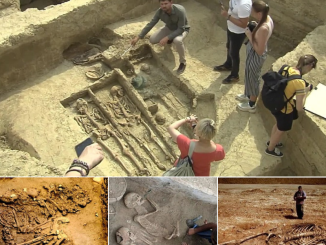According to archaeologist Francisco Perez Ruiz, for the first time, Mexican scientists have found a relic that proves the existence of residential groups that once lived in the Chichen Itza area.

Mexican scientists at the Chichen Itza archaeological site. (Source: Reuters)
Mexican scientists have just discovered a complex of relics at the famous Chichen Itza archaeological site of the ancient Mayan civilization.
Built on the Yutacan Peninsula bordering the Gulf of Mexico, the ruins were part of an elite housing complex built in the 5th century AD.
The February 13 announcement of the Mexican National Institute of Anthropology and History (INAH) said that the newly discovered complex includes a large gate and houses named by the Mayans such as the Snail house and the Moon house. and the bow of the Phalluses.
According to archaeologist Francisco Perez Ruiz, this is the first time Mexican scientists have found a relic proving the existence of residential groups that once lived in the Chichen Itza area.
More specifically, the newly discovered relic could be the residence of a lord who lived with his family.
Adding to the opinions of his colleagues, archaeologist Jose Osorio Leon said that there are certainly many other important sites to be discovered in the area.
Continued search of the peripheral areas will help modern people imagine the life of the ancient Maya in this sacred city.
INAH experts said that this monument called Chichen Viejo will be included in the list of sightseeing tours for the Chichen Itza archaeological tourist area – one of the world heritage sites recognized by UNESCO.
Starting to exploit tourism since 1988, the Chichen Itza relic site attracts about 2 million visitors each year, bringing a significant source of revenue to the state of Yutacan located in Southeast Mexico.
Just 190km from iconic tourist beach Cancun, Chichen Itza is on one of Mexico’s most important tourist routes.


